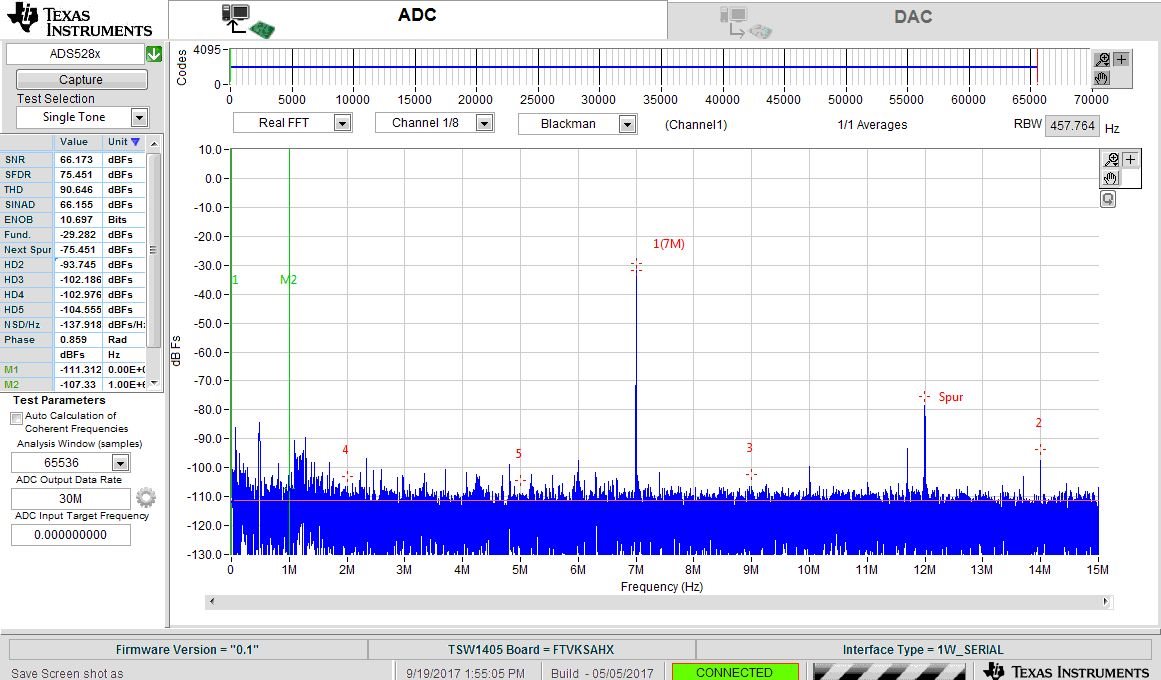Other Parts Discussed in Thread: ADS5281, ADS5282, ADS5400
Tool/software: Starterware
Hii..!
Anyone can please help me how to choose the clock frequency in the ADS5281EVM with HSDC pro software and I set up as per the users guide but the I can't get the capture of my input frequency. I don't even know about the firmware selection so please help me. I am starting from vary basic level for the university lab work for the medical ultrasound ADCs.



